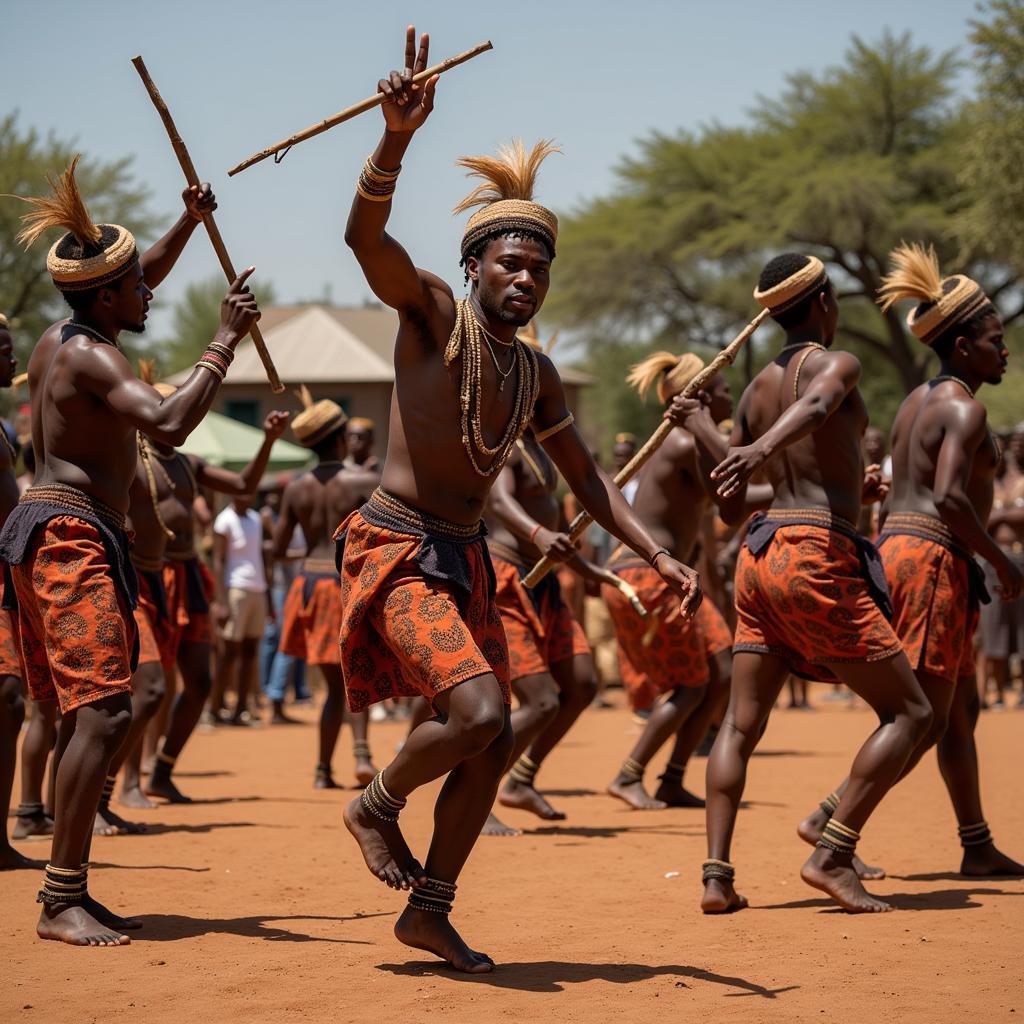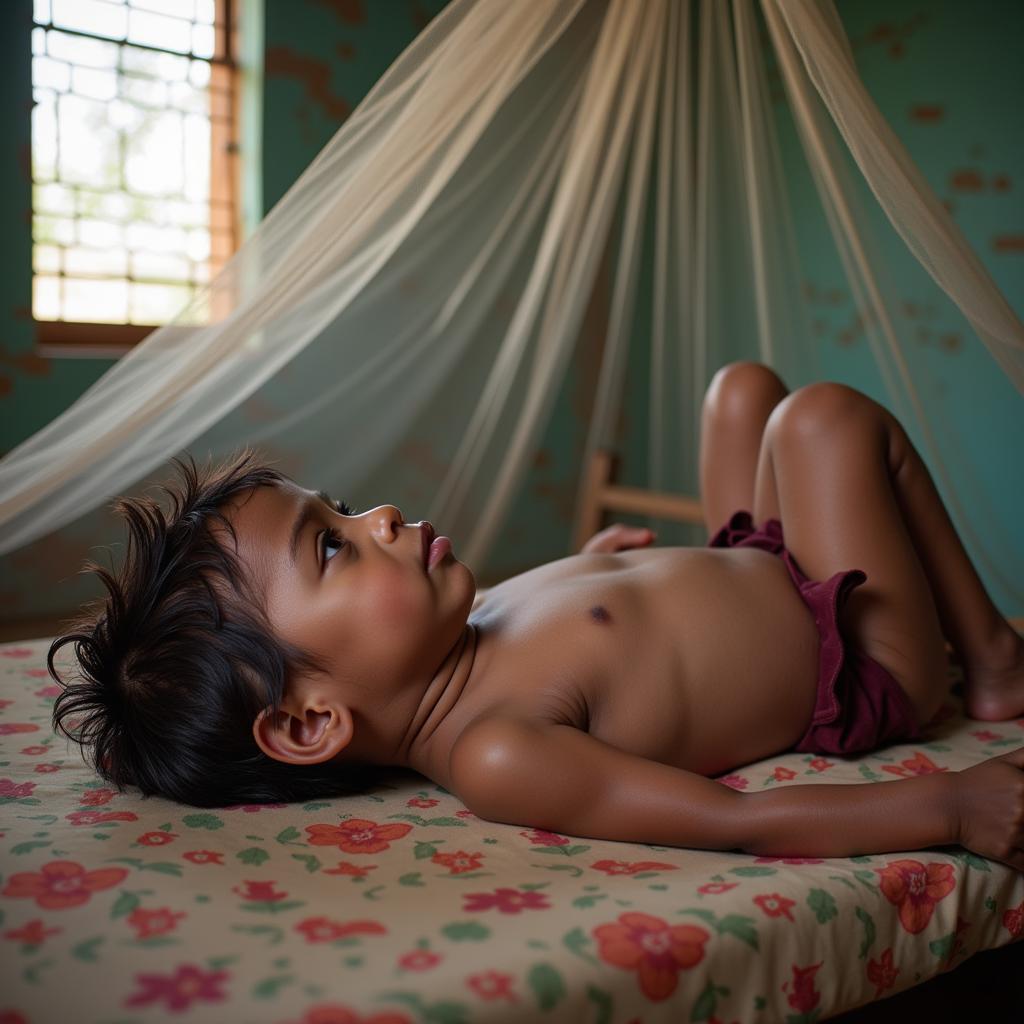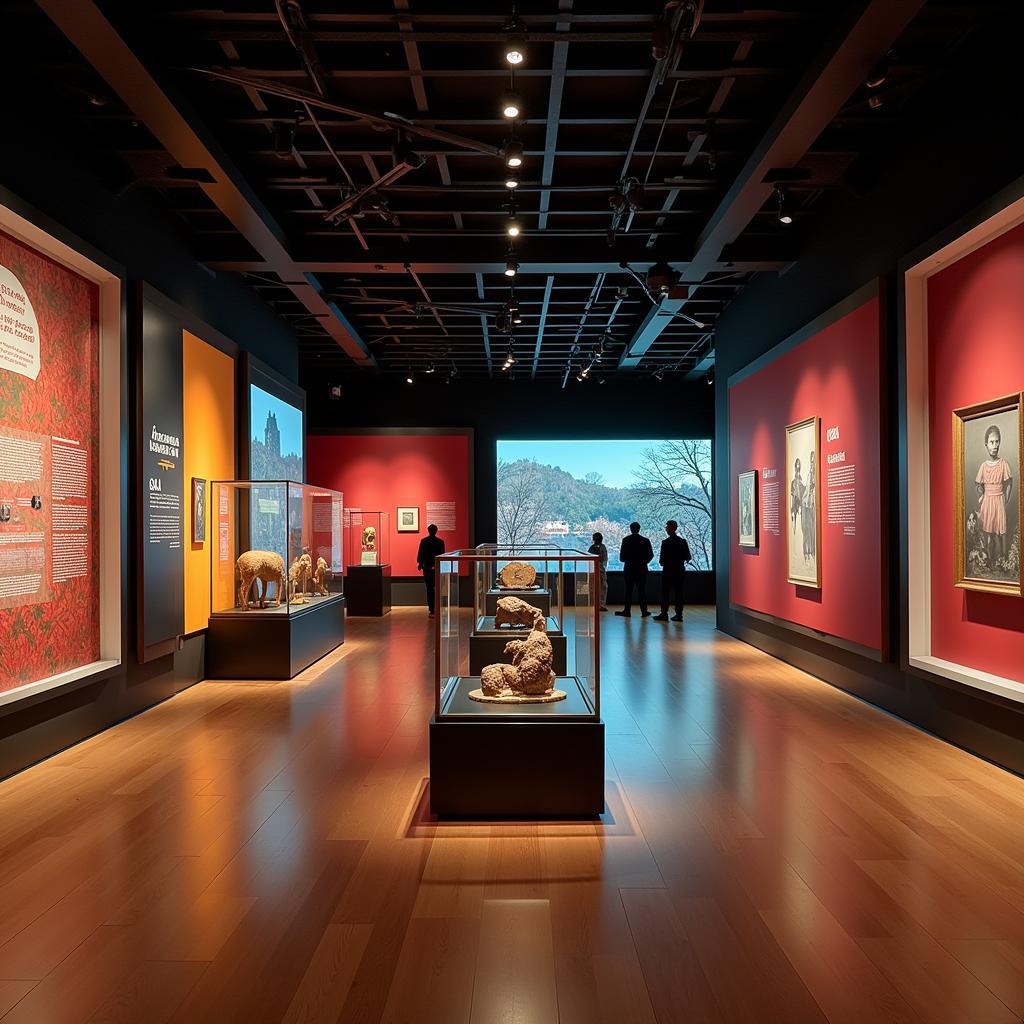African Dance Props: Unveiling the Rhythms and Symbolism
African dance is more than just movement; it’s a powerful form of storytelling that has captivated audiences for centuries. Integral to this art form are the captivating props that enhance the visual narrative and add layers of meaning to the performance. These props, often infused with cultural significance, transform dancers into living embodiments of African tradition, history, and spirituality.
The Role of Props in African Dance
In the world of African dance, props transcend their material existence to become extensions of the dancer’s body and spirit. They aren’t merely decorative; they are tools for communication, amplifying emotions, and adding depth to the story being told through movement. A simple prop can transform a dance, adding a new dimension of visual excitement and cultural richness.
Common African Dance Props and Their Significance
1. Masks: Masks hold a revered place in many African cultures, representing spirits, ancestors, or deities. In dance, masks transcend the human, allowing the dancer to embody a specific entity and connect with the spiritual realm.
2. Fans and Fly Whisks: Often made from natural materials like feathers or animal hair, fans and fly whisks create captivating visual effects while symbolizing power, royalty, or spiritual cleansing.
3. Walking Sticks/Staffs: Beyond aiding balance, staffs represent wisdom, authority, and connection to the earth. In dance, they can be used percussively or to create dynamic movements.
4. Baskets and Calabashes: These everyday objects, representing harvest and abundance, are incorporated into dances celebrating fertility, community, and the cycle of life.
5. Textiles and Costumes: Vibrant fabrics, intricate beadwork, and symbolic adornments aren’t just about aesthetics. They reflect cultural identity, social standing, and even the specific story being conveyed through the dance.
Exploring Regional Variations
Just as dance styles vary across the African continent, so too do the props employed. Each region boasts its own unique traditions and interpretations.
-
West Africa: Known for its energetic dances and polyrhythmic music, West African dance often features vibrant costumes, elaborate headdresses, and the use of props like the African hoopie, a large, decorated hoop manipulated by the dancer’s body.
-
East Africa: Characterized by graceful movements and intricate footwork, East African dance may incorporate props like spears and shields, reflecting the region’s warrior traditions, or baskets and gourds, signifying agricultural significance.
-
Southern Africa: Dances from this region often feature powerful footwork and rhythmic clapping, with props like sticks, knobkerries, and animal skins adding to the visual spectacle and storytelling.
 Southern African dancers in traditional attire
Southern African dancers in traditional attire
Beyond the Visual: The Deeper Meaning
African Dance Props are never arbitrary; they are chosen with intention and imbued with symbolism. Understanding their significance enhances the appreciation of the dance itself.
-
Spiritual Connection: Many props serve as conduits to the spirit world, facilitating communication with ancestors and deities.
-
Cultural Identity: Props often reflect the specific traditions, beliefs, and values of a particular community or ethnic group.
-
Social Commentary: Through the use of props, dancers can convey messages about societal issues, historical events, or daily life.
Preserving Tradition in a Modern World
As Africa continues to evolve, so too does its rich dance heritage. While some traditional props remain unchanged, contemporary choreographers are exploring innovative ways to incorporate new materials and interpretations, ensuring that African dance continues to thrive and inspire future generations.
FAQs about African Dance Props
1. Are African dance props used in every performance?
Not necessarily. While props play a significant role in many African dances, their use depends on the specific dance style, the story being told, and the choreographer’s artistic vision.
2. Where can I learn more about the symbolism of specific African dance props?
Resources like ethnographic museums, cultural centers, and academic publications specializing in African art and culture can provide in-depth information.
Ready to Experience the Magic of African Dance?
From the intricate masks to the vibrant textiles, African dance props are a testament to the continent’s rich artistic heritage. If you ever have the opportunity to witness an African dance class in Newark, or anywhere in the world, take a moment to appreciate the beauty and symbolism embedded in every movement and prop. It’s a captivating experience that will stay with you long after the music fades.
For support, please contact us via:
Phone Number: +255768904061
Email: kaka.mag@gmail.com
Or visit us at:
Mbarali DC Mawindi, Kangaga, Tanzania.
Our customer service team is available 24/7.

